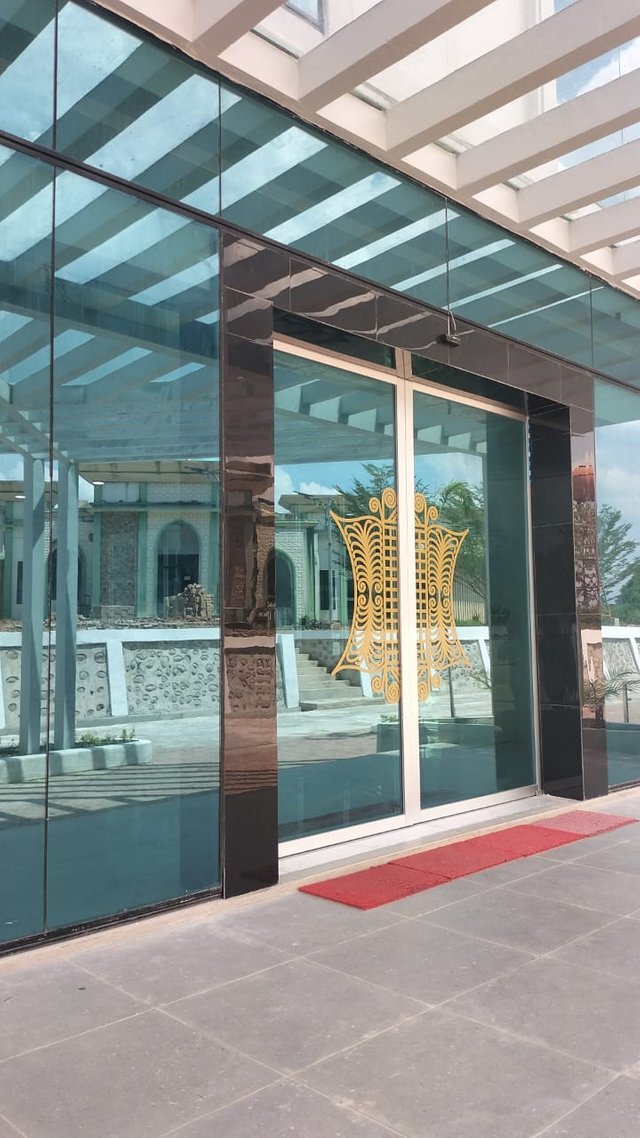NEWSII IAIN Lhokseumawe Civilization Campus which Preserves Acehnese Door Motifs
Pinto Aceh or also known as Pinto Khop is one of the most famous motifs in Aceh. This motif can even be easily found in every city in Aceh Province. This Pinto Aceh motif was originally the work of art of someone named Mahmud Ibrahim or more familiarly known as Utoh Mud. He is a gold craftsman who comes from Blang Oi, Meuraksa District, Banda Aceh City.
The Ministry of Education and Culture (Kemendikbud) of the Republic of Indonesia has designated five types of intangible forms of traditional Acehnese art as Indonesian cultural heritage in 2016. The five forms of traditional Acehnese art are Dampeng Dance (Aceh Singkil), Rapai Geleng Dance (Southwest Aceh ), Rabbani Wahid Dance (Bireuen), Bines Dance (Gayo Lues), and Pinto Aceh Jewelry (Pintu Aceh). Pinto Aceh is the only traditional Acehnese art work determined by the Ministry of Education and Culture which is not derived from dance.
The initial history of the birth of Pinto Aceh jewelry began in 1926. At that time the Dutch Colonial Government in Kutaraja (now known as Banda Aceh) held the largest satteling (night market) which was held on the Esplanade (now known as Blang Padang Square). At the night market, the Dutch Colonial Government gave gold and silver craftsmen the opportunity to open their stands to show off their handicrafts. Because of his skill and skill in forging gold, after the night market event was over, a gold and silver craftsman named Mahmud Ibrahim (Utoh Mud) was deemed worthy of obtaining a certificate from the satteling committee.
The Pinto Aceh motif jewelry is inspired by the design of a monument left by Sultan Iskandar Muda (1607-1636), namely Pinto Khop, the door to Taman Ghairah or Bustanussalatin which is the garden of the Palace of the Sultanate of Aceh Darussalam. According to previous history, in the era of the Aceh Darussalam Sultanate, Pinto Khop was the back door of the Aceh Palace which was specifically used as an entry and exit door for Sultan Iskandar Muda's empress and her ladies-in-waiting. If the empress wanted to go to the edge of Krueng Daroy to bathe, she always went through Pinto Khop. Currently, a small part of Taman Ghairah has been restored and is known as Taman Putroe Phang, the name of the empress of Sultan Iskandar Muda who came from Pahang, Malaysia.
The reason why the campus uses the "Pinto Aceh" logo is because this logo is traditional Acehnese jewelry which has been designated by the Ministry of Education and Culture (Kemendikbud) of the Republic of Indonesia as Indonesia's cultural heritage in 2016
- This logo is a motif from the Pinto Khop building, the door to Taman Ghairah or Bustanussalatin which is the garden of the Palace of the Sultanate of Aceh Darussalam
- The use of this logo can also show the richness of Aceh's culture and tradition, which can bring satisfaction and togetherness to local, national and international communities.
So the Lhokseumawe State Islamic Institute (IAIN) campus has built a postgraduate building since 2023 with the Aceh door motif in order to preserve the past history of Aceh by bringing prosperity back to the Aceh door motif, so it is clear that we care about the history that existed in Aceh in the previous century.

SALAM LITERASI AL HAZARD